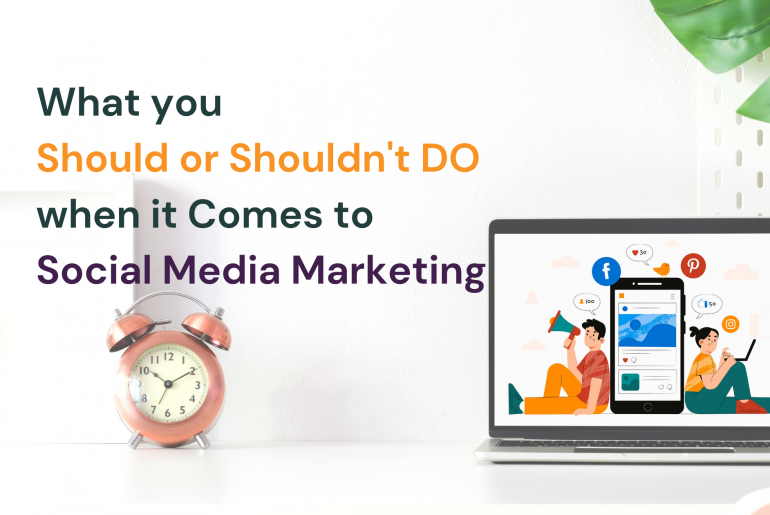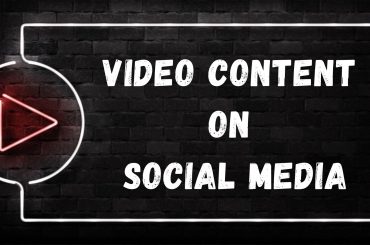Times are changing. There’s more to social media marketing than posting on Facebook, LinkedIn, Instagram, and Twitter a few times a day. If you want to build your brand, then get ready to engage with your audience to increase sales, it takes time, effort, and work.
You need to stand out from competitors, social media blabbers, and even compete with celebrities, and influencers.
Altogether, you need an amazing social media marketing strategy.
Often, with any new marketing, you’ll have to step away from traditional social media platforms and find new ways of reaching your target audience.
For Example On Instagram, the popularity of Reels highlights the importance of keeping up-to-date with the changes in the digital world to not miss out on any key opportunities.
Here are 12 SHOULD OR SHOULDN’T DO WHEN IT COMES TO SOCIAL MEDIA MARKETING
7 Shoulds:
1. Update your pages and profiles.
First impressions are important and often lasting. Think of your social media profile as your digital first impression. Social media accounts that are partly complete look less professional. So take a few minutes to fill out all your profile details, contact information, and upload good-quality profile and cover photos.
2. Have a separate business and personal accounts.

While building a brand, it helps if you could keep your professional and personal profile separate on social media. By being consistent with the types of content you share on your business account, your audience will know which account to follow. This also avoids spamming family and friends that follow you for personal updates.

What you post on Social media becomes a representation of you and your business. Be proud of who you are and what you represent as a brand. Think about the following before you post:
- Does this have value?
- Does this fit the target audience?
- Is this the best format for the Post?
- Am I posting this at the best time?
- Is my text visible?
Use an infographic from HootSuite as a guide if you’re unsure of your content.
4. Post regularly.
How often should you engage with your online community? Well, this can vary depending on your business and industry, but a good rule of thumb is at least once or twice a week.
5. Set up your networks.

You may be tempted to try all social media marketing platforms that pop up, but it’s not recommended to post on every available platform. To start, focus on the social media platforms where your audience is. More likely, it would be Facebook, LinkedIn, Instagram, and maybe Twitter. Providing good content via these platforms is worth your time and effort, no matter your industry type.
6. Interact with your audience.

Creating helpful content is nice, but it’s not all that social media has to offer. Interacting with your followers is also important.
- See a question or comment?: Send the person a friendly reply.
- Looking for recommendations?: Ask your audience.
- Did someone mention you, retweet you, tag you, or share your post? : Give them a like and comment.
Build connections on social media just like you would in person. Interact with other groups, post your content in groups that will boost your legitimacy and get you in front of a wider audience.
7. Match your content to the platform.

Every social media marketing platform has its purpose. Hence match your content and tone to the proper social media sites.
Here’s the breakdown:
- Facebook is casual and focused on connections. You can easily engage with others and join relevant groups.
- LinkedIn’s focus is on professionalism, and the content shared there tends to reflect that.
- Twitter handles conversations between both businesses and individuals, but the character limit means it’s best for shorter posts.
- Instagram is the perfect place to share something visual, such as the latest updates in the industry.
If you have designing skills and have some time on your hands, consider trying reels or YouTube shorts. Reels focuses on bite-sized, entertaining video content, while YouTube is best for long and short videos. You can give updates related to your industry, answer FAQs, Provide tips, Growth hacks, and virtual tours.
7 Shouldn’t
- Don’t Get Angry if you see Negative Comments

As your brand grows, you’ll get both negative & positive comments. Remember, negative comments are to help you to get better.
Deal with them open-mindedly and try to solve the problem instead of thrashing back. When you put 100% effort into helping customers with their problems, you both appease customers and gain input for your brand’s improvement.
- Don’t Skip the Editing Process
Before posting anything on social media, edit it cautiously. Typographical errors and grammar mistakes will be noticed, and they won’t do your brand any good.
- Don’t Fail to address Mistakes
No matter how strict you are with your guidelines, mistakes will happen. When they do, address them tactfully. You can even be a little entertaining here.
- Don’t Post When Inspiration Strikes
On your personal account, you can post any time the mood strikes. Or not at all.Not with your business account. The more you post, the more recognition you’ll gain.
Here’s a quick guideline on how often to post on different social media platforms.
- Facebook and Instagram: Once or twice daily.
- Twitter: 5-10 tweets daily.
- Pinterest: 5-20 pins daily.
- Linkedin: 20 posts a month.
- Don’t Buy Followers

Although YOU ARE TEMPTED to grow your followers fast, buying followers is a bad idea.
You might know your social media content is good, but imagine how good it looks if 5000 people who like your page agree.
Numbers aren’t everything. A single person who engages with your post is better than a hundred who ignore it.
- DON’T Be needy.

Don’t beg your friends to follow or to “please retweet,” or send page invites on Facebook to “like” your page. It’s acceptable to let your followers on personal accounts know that you have a business page and what they can expect if they follow you.
Earn likes with helpful and share-worthy content.
- DON’T Be a spammer.

Liking, commenting, posting, retweeting, and sharing is great, but keep everything within a limit. Nobody wants their social media feeds to be filled with your posts and shares.
For example, don’t join 30 groups on LinkedIn, Facebook and post the same promotional post in all of them, and then never interact with group members again.
Using social media for your business doesn’t mean you should not have fun with it! Stay updated and try live videos, interactive polls, and keep your messages friendly. You’ll see that you will enjoy this part of your business instead of fearing it.
Social media is constantly evolving, these SHOULD OR SHOULDN’T Social Media Marketing Strategies for business owners will also continue to change. Staying aware of current updates and best practices and including them in your social media marketing strategy will keep your marketing efforts 100% fresh and your business top of your audience’s mind.
Still, feeling like it’s too much? We understand. MetroMindz can take over the bulk of your social media strategy. We help you make the most out of the social media platforms and increase your brand presence online within a short span of time.





